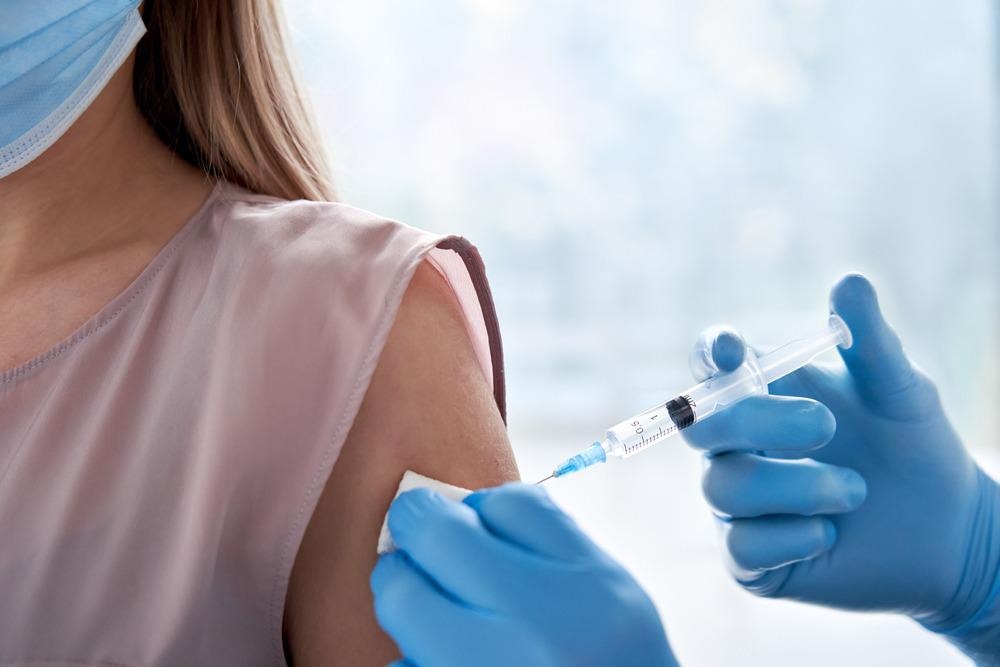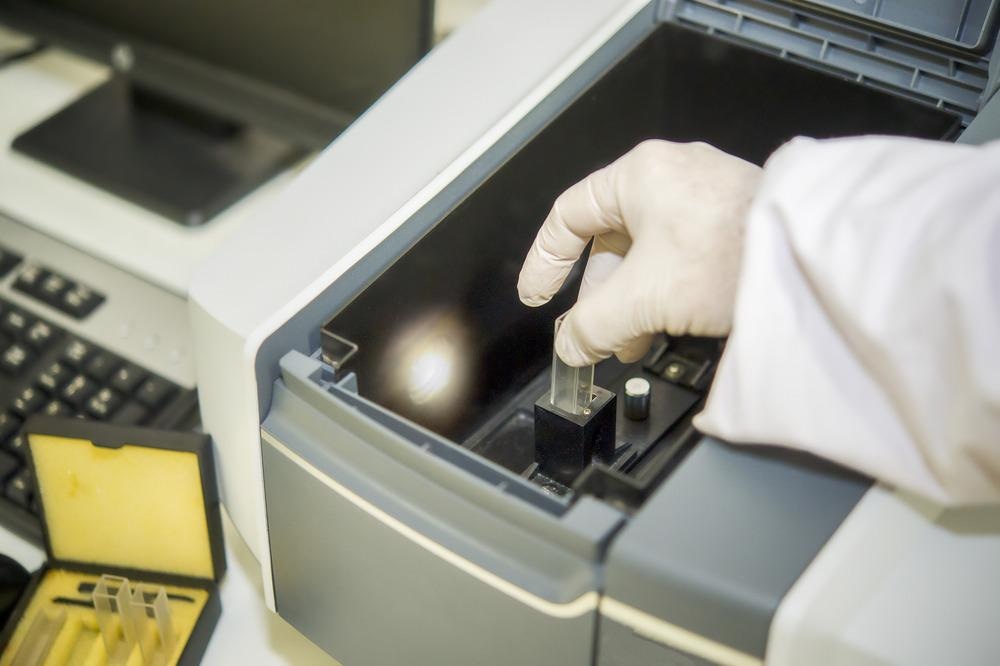Vaccines are complex formulations that stimulate the body's immune system in response to the attack from infectious pathogens like viruses and bacteria. As demand increases, so does the need to reduce the time and cost of the development process. With several techniques available, spectroscopy can assist with assessing the level of quality, especially for emerging vaccines.

Image Credit: insta_photos/Shutterstock.com
According to the World Health Organization, vaccines are "one of the most effective ways to prevent disease." With an increasing global demand – as witnessed during the recent coronavirus disease (COVID-19) pandemic – the race to vaccine development relies on the guarantee of safety and potency.
Concerning the manufacturing process, a high level of quality control is essential. Producing a vaccine involves several reagents and chemicals and various operations such as precipitations, centrifugation, filtrations, and chromatographic separations.
The integrity of the active vaccine components must be maintained throughout the process. In addition, any trace or residual reagents must be removed from the final product. Spectroscopy can monitor the whole process and contributes to the validation and manufacturing scale-up.
Monitoring Trace Residues in the Manufacturing Process
Nuclear magnetic resonance (NMR) spectroscopy is a versatile analytical tool in process optimization, allowing the determination of impurities in vaccines. In particular, NMR is a powerful technique to identify and check the purity of the capsular polysaccharides (CPS) based conjugate vaccines, which are widely used against diseases caused by S. pneumonia, N. meningitides, and Haemophilus influenzae.
CPSs consist of repeating units of 1-10 sugar residues that NMR spectroscopy can quickly characterize. Antifoaming reagents (based on silicon or polyethylene glycol) are typically added to prevent frothing during the manufacturing process. The presence of residual antifoam in the product can be conveniently identified via NMR, where additional signals at 1.06, 3.46, and 3.64 ppm can be visible in the spectrum.
The polysaccharides purification process involves precipitation with detergents such as deoxycholic acid (DOC) to remove proteins. In the NMR spectrum of the Haemophilus influenzae type b (Hib) polysaccharide, the presence of residual DOC can be confirmed by additional peaks between 0.6, 2.3, and 3.6 ppm.
NMR spectroscopy is also helpful in determining the presence of O-acetyl groups (OAc) – a critical parameter for immunogenicity. The NMR spectrum of the meningococcal serogroup A (MenA) polysaccharide contains characteristic O-acetylation signals at 4.59, 4.56, and 4.50 ppm, while the de-O-acetylated repeating units show a signal at 4.45 ppm.
Therefore, it is possible to quantify the percentage of O-acetylation of the polysaccharide. Moreover, by monitoring the relative increase in the intensity of the peak at 4.45 ppm, it is possible to assess the loss of O-acetylation.
Very often, aluminum salts, such as aluminum hydroxide or aluminum phosphate, are added as adjuvants to increase the immune response of vaccines. Recently, a method that uses quantitative NMR (qNMR) has been proposed to analyze total aluminum and phosphorous in formulated vaccine products. The method provides rapid and quantitative analysis with minimal sample preparation and potentially monitors adjuvants during vaccine formulation.
Identification of Vaccine Components by UV/Vis Spectroscopy
UV spectroscopy is another technique that provides accurate, reliable, and fast quantification of some vaccine components and, therefore, can provide valuable insights into the assessment of new classes of vaccines. It is suitable for analyzing DNA/RNA, proteins, and preservatives.
Obtaining information on the purity of several components is significantly beneficial to every stage of the vaccine development process, from the research phase to the processing and, ultimately, quality control. Currently, UV/Vis is used to analyze a variety of critical vaccines (i.e., rabies and influenza).
The technique enables the quantification of thiomersal (or thimerosal, a common vaccine preservative). After extraction with chloroform, the molecule's presence is determined through the absorbance measured at 490 nm.
Among the compounds used in vaccine preparations, formalin (a detoxifying agent) can be determined by UV/Vis spectroscopy following its reaction with methyl benzothiazoline hydrazone hydrochloride and measuring the absorbance at 628 nm. Similarly, the absorbance at 550 nm can be used to determine the amount of phenol (another preservative) following the reaction with 4-amino antipyrine.

Image Credit: Rabbitmindphoto/Shutterstock.com
Raman Spectra Reveals Vaccine Signatures
Recent developments in the field of Raman technology allow the analysis of complex biological products. Information on the molecular level can be extrapolated, and very characteristic signals can be used as vibrational fingerprints for the substrate under examination.
Raman measurements have been proposed to identify and differentiate vaccines, particularly those containing antigens from tetanus, diphtheria, and pertussis (DTaP vaccines).
The method used multiple spectra acquired from different regions of air-dried samples. The mean spectra identified DTaP vaccine products with high specificity and sensitivity and revealed that each vaccine might have a specific spectral signature.
Thanks to the differences in the Raman spectral profiles, it is possible to discriminate between products containing the same vaccine antigens but produced by different manufacturers. Such spectral signatures could be exploited to develop a reference database of Raman spectra of vaccine products.
While there is a growing need for rapid and reliable methods to confirm the identity of vaccine components and therefore ensure safety and efficacy are preserved, various analytical tools available can be further exploited to assist with key tasks in the development of new vaccines, such as the identification of residual reagents and the monitoring of production process.
Sources:
- Beri, S., Gandhi, D. & Ravenscroft, N. (2019). Use of NMR as an analytical tool in the process development of conjugate vaccines against Haemophilus influenzae type b (Hib) and meningococcal serogroup A (MenA). Biologicals, 62, 102-106.10.1016/j.biologicals.2019.10.005
- Khatun, R., Hunter, H. N., Sheng, Y., Carpick, B. W. & Kirkitadze, M. D. (2018). (27)Al and (31)P NMR spectroscopy method development to quantify aluminum phosphate in adjuvanted vaccine formulations. J Pharm Biomed Anal, 159, 166-172.10.1016/j.jpba.2018.06.025
- Division, M. T. G. A. 2020. UV/Vis Spectrophotometry Applications in COVID-19 Vaccine Research.Available at www.mt.com/.../spectrophotometric-covid19-vaccine-analysis.html
- Silge, A., Bocklitz, T., Becker, B., Matheis, W., Popp, J. & Bekeredjian-Ding, I. (2018). Raman spectroscopy-based identification of toxoid vaccine products. NPJ Vaccines, 3, 50.10.1038/s41541-018-0088-y
Further Reading
Last Updated: May 16, 2022